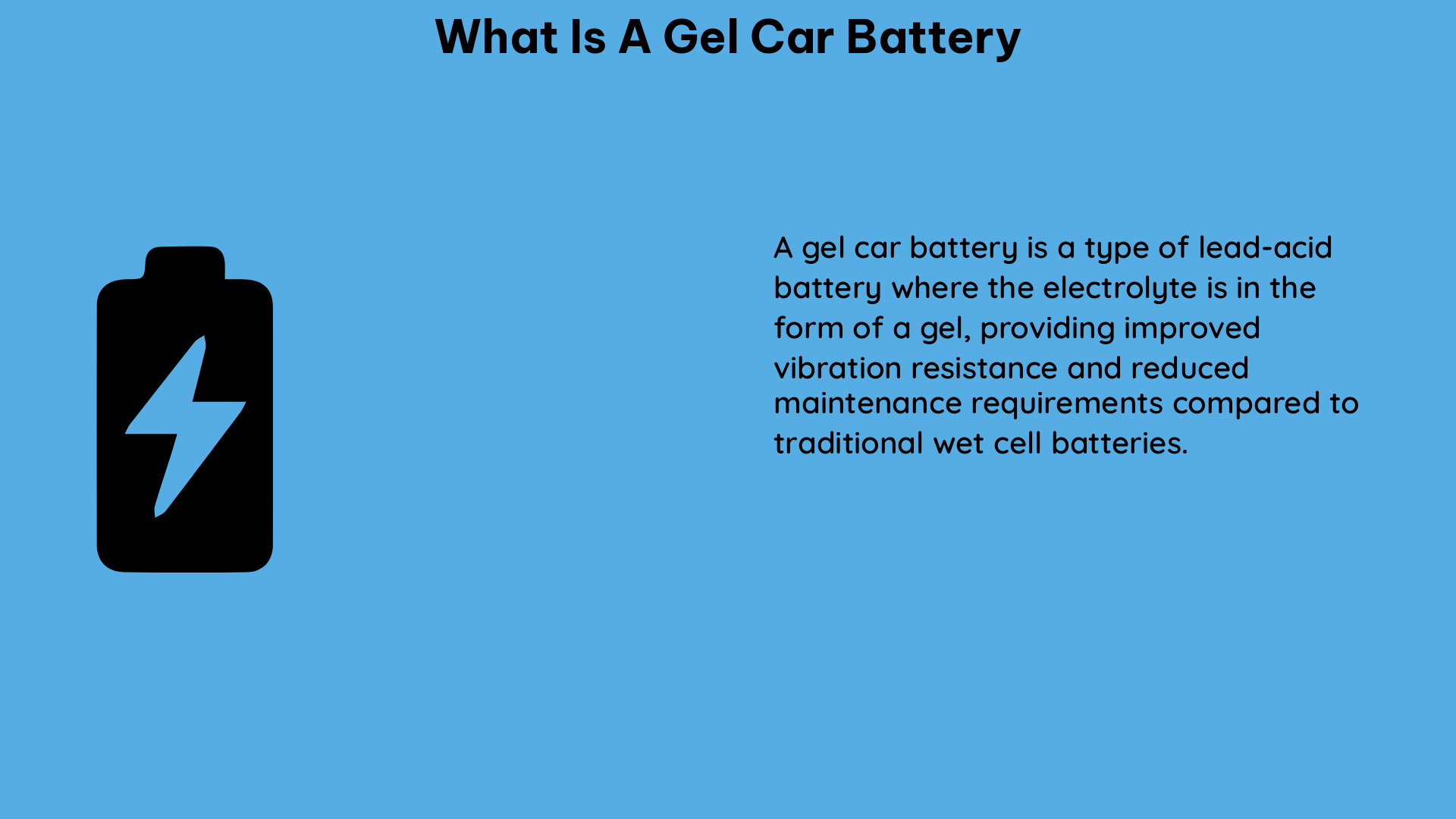A gel car battery, also known as a gel cell battery, is a type of lead-acid battery that uses a gel-like substance as the electrolyte instead of a liquid electrolyte found in traditional lead-acid batteries. The gel electrolyte is created by adding silica to the electrolyte, which thickens it and turns it into a relatively stationary gel substance. This gel mixture allows the battery to utilize the acid and electrolyte in the same way it would with a traditional lead-acid battery, but without the added maintenance.
Advantages of Gel Car Batteries
Maintenance-Free
One of the main advantages of a gel car battery is that it is maintenance-free. Since the electrolyte is in a gel form, there is little to no maintenance required to keep the battery working properly. This is because there is nowhere for the gel mixture to go, even if the battery is installed in a variety of positions or if the casing becomes damaged. Additionally, gel batteries can be used in applications where ventilation is limited due to the minimal fumes created as a result of use.
Resistance to Vibration and Impacts
Gel batteries are also resistant to extreme vibration and other impacts, making them great batteries for items such as four-wheelers. They are also resistant to discharge death, meaning they can discharge more and still be recharged like new, making them deep cycle batteries.
Longer Lifespan
Gel batteries have a longer lifespan compared to traditional lead-acid batteries. This is due to their resistance to sulfation, a common issue with lead-acid batteries that can reduce their capacity and lifespan. The gel electrolyte in gel batteries is less prone to sulfation, allowing them to maintain their performance for a longer period.
Disadvantages of Gel Car Batteries

Higher Cost
One of the biggest drawbacks of gel car batteries is the price tag, as they tend to be more expensive than traditional lead-acid batteries. This is due to the additional manufacturing process required to create the gel electrolyte.
Charging Challenges
Gel batteries can be charging challenged, requiring extra time for slow charging cycles and careful monitoring to avoid voids with the electrolyte, which can cause irreversible damage. Improper charging can lead to the formation of gas pockets within the gel, reducing the battery’s capacity and lifespan.
Temperature Sensitivity
Gel batteries are more sensitive to temperature changes compared to other lead-acid battery types. Extreme temperatures, both hot and cold, can affect the performance and lifespan of gel batteries. It is important to ensure that gel batteries are stored and operated within the recommended temperature range to maintain optimal performance.
Technical Specifications of Gel Car Batteries
Gel car batteries have a nominal voltage of 12V, just like traditional lead-acid batteries. However, the capacity of a gel battery can vary depending on the specific model and application. For example, a gel battery designed for a motorcycle may have a capacity of 12Ah, while a gel battery designed for a car or truck may have a capacity of 50Ah or more.
The specific gravity of the gel electrolyte in a gel car battery is typically around 1.28-1.30, which is slightly higher than the specific gravity of the liquid electrolyte in a traditional lead-acid battery (around 1.26-1.28). This higher specific gravity helps to maintain the gel-like consistency of the electrolyte and prevents it from becoming too thin or runny.
The internal resistance of a gel car battery is generally lower than that of a traditional lead-acid battery, which can result in improved power delivery and better performance under high-load conditions. However, the lower internal resistance also means that gel batteries are more susceptible to overcharging, which can lead to the formation of gas pockets and other issues.
DIY Installation and Maintenance of Gel Car Batteries
When it comes to DIY installation and maintenance of a gel car battery, it is important to follow some simple guidelines to ensure proper performance and longevity.
Proper Charging
Gel batteries require a specific charging voltage and current to avoid damage to the gel electrolyte. It is recommended to use a charger specifically designed for gel batteries to ensure proper charging. Overcharging or using an incorrect charging profile can lead to the formation of gas pockets and other issues that can reduce the battery’s capacity and lifespan.
Regular Maintenance
While gel batteries are maintenance-free in terms of adding water or checking electrolyte levels, they still require regular maintenance to ensure proper performance. This includes checking the battery terminals for corrosion and cleaning them if necessary, as well as checking the battery case for any signs of damage or leakage.
Proper Storage
Gel batteries should be stored in a cool, dry place away from direct sunlight and extreme temperatures. It is also recommended to keep the battery fully charged during storage to prevent sulfation and other forms of damage. Storing a gel battery in a discharged state can lead to permanent capacity loss and reduced lifespan.
By following these guidelines, you can ensure that your gel car battery provides reliable performance and longevity in a variety of applications.
References:
– Battery University – Acid Stratification and Surface Charge
– Northeast Battery – Pros and Cons of Gel and AGM Batteries
– Battery Guys – Differences Between AGM, Gel, and Flooded Batteries
– Varta Automotive – Gel Battery or AGM Battery: These are the Differences
– Battery Stuff – Battery Basics

The lambdageeks.com Core SME Team is a group of experienced subject matter experts from diverse scientific and technical fields including Physics, Chemistry, Technology,Electronics & Electrical Engineering, Automotive, Mechanical Engineering. Our team collaborates to create high-quality, well-researched articles on a wide range of science and technology topics for the lambdageeks.com website.
All Our Senior SME are having more than 7 Years of experience in the respective fields . They are either Working Industry Professionals or assocaited With different Universities. Refer Our Authors Page to get to know About our Core SMEs.